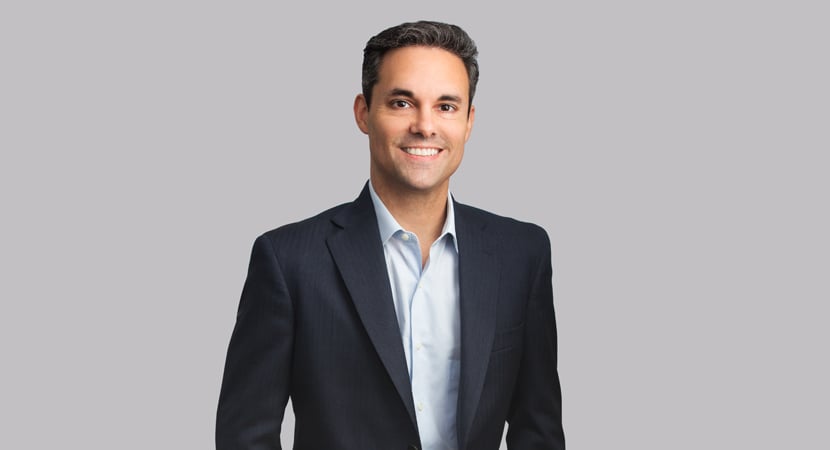Second Circuit holds that “discovery rule” remains proper rule for determining whether Copyright Act’s statute of limitations has run, but that plaintiff is entitled to damages only for infringements during three years preceding filing of claim.
Photographer Joseph Sohm and Visions of America LLC filed a copyright infringement suit in May 2016 against Scholastic Inc., a publisher and distributor of children’s books that licensed certain of Sohm’s photographs for use in its publications. Sohm alleged that Scholastic infringed 89 of his photographs by using them in excess of the number of print runs contemplated by the invoices that governed Scholastic’s licenses. In the district court, the parties each moved for partial summary judgment relating to certain uses of the photographs. The court ultimately granted in part and denied in part each party’s motion, finding that Scholastic infringed on the copyrights to six of Sohm’s photographs while dismissing the remainder of Sohm’s claims. Both parties appealed several aspects of the district court’s ruling to the Second Circuit.
On appeal, Scholastic argued that the district court erred in applying the “discovery rule” instead of the “injury rule” while analyzing Scholastic’s argument that the three-year statute of limitations for Sohm’s copyright infringement claims had run. Under Second Circuit precedent, for purposes of determining whether the Copyright Act’s statute of limitations has run, a copyright infringement claim does not accrue until the copyright holder discovers, or with due diligence should have discovered, the infringement. The injury rule, on the other hand, states that an infringement claim accrues upon each act of infringement, regardless of the copyright holder’s knowledge of that infringement. While the Second Circuit had adopted the discovery rule for these purposes, Scholastic argued that the Supreme Court’s recent decisions in SCA Hygiene Prods. Aktiebolag v. First Quality Baby Prods. and Petrella v. Metro-Goldwyn-Mayer Inc. require the discovery rule to be abandoned in favor of the injury rule. The Second Circuit disagreed, holding that, while the decision in Petrella may be consistent with the injury rule, the Supreme Court directly stated that it was not opining on whether the discovery rule or injury rule should be used and, therefore, the Supreme Court had not implicitly or explicitly overruled the Second Circuit’s use of the discovery rule. Finding that Scholastic failed to present sufficient evidence showing that the statute of limitations had elapsed, the Second Circuit affirmed the district court’s rejection of Scholastic’s statute of limitations defense.
For a related issue on appeal, Scholastic claimed that even if the discovery rule was correctly applied, the district court erred in allowing Sohm to recover damages for more than the three years prior to the filing of his suit, again based on the Supreme Court’s decision in Petrella. This time the Second Circuit agreed, concluding that the Supreme Court explicitly limited the damages available on a copyright infringement action to the three-year period prior to the filing of the claim. Therefore, the Second Circuit held that, while the discovery rule is applied to determine when a copyright infringement action accrues for purposes of the Copyright Act’s statute of limitations, “a plaintiff’s recovery is limited to damages incurred during the three years prior to filing suit.”
Scholastic’s final argument on appeal was that Sohm did not have valid copyright registrations in certain of his photographs that had been components of group registrations submitted to the Copyright Office by Sohm’s photo licensing agent, Corbis Corp., because Sohm was not identified as the author of the works as required under the Copyright Act. When Corbis submitted the group registrations to the Copyright Office, it identified itself as the author of the compilation of photographs without naming the authors of the individual photos. Agreeing with the Ninth Circuit’s decision on this issue in Alaska Stock LLC v. Houghton Mifflin Harcourt Publishing Co., the Second Circuit held that “[t]he plain language of § 409(2) [of the Copyright Act] does not require a group registrant like Corbis to include each individual author of each individual work in the compilation to effectively register those individual works.” Accordingly, the Second Circuit affirmed the district court’s determination that Sohm had valid copyright registrations on those photographs that had been part of Corbis’ group registrations.
Sohm also appealed three separate aspects of the district court’s ruling. The first issue was an appeal of the district court’s finding that the print-run limitations in Scholastic’s licenses were contractual covenants and not conditions precedent to the license, which led the district court to conclude that Sohm’s claims sounded in breach of contract (which Sohm had not pleaded) and not copyright infringement. On that basis, the district court had granted summary judgment in Scholastic’s favor on certain of Sohm’s claims. Citing New York law, the Second Circuit explained that, if a covenant (“a manifestation of intention to act or refrain from acting in a specified way”) of a license is breached, the licensor will have a cause of action for breach of contract rather than copyright infringement, but if the licensee has failed to satisfy a condition of the license, “it follows that the rights dependent upon satisfaction of such condition have not been effectively licensed, and therefore, any use by the licensee is without authority from the licensor and may therefore constitute an infringement of copyright.” Sohm argued that the licenses clearly conditioned the right to use his photographs upon Scholastic’s meeting all the conditions of the license, including limitations on the number of print runs Scholastic made for its publications including Sohm’s photos. The Second Circuit agreed, finding that, on the face of the license agreements, “the print-run limitations were conditions precedent, the violations of which gave rise to claims for copyright infringement.” Accordingly, the Second Circuit reversed the grant of partial summary judgment in Scholastic’s favor on this point.
For the second point on his appeal, Sohm argued that the district court misstated the elements of a claim for copyright infringement and improperly allocated to Sohm the burden of showing that Scholastic had exceeded the scope of the licenses. The Second Circuit disagreed, finding that the district court had properly stated the elements of copyright infringement and that, under Second Circuit precedent, “when the contested issue is the scope of a license, rather than the existence of one, the copyright owner bears the burden of proving that the defendant’s copying was unauthorized under the license and the license need not be pleaded as an affirmative defense.” The court concluded that Sohm failed to satisfy his burden of proving that Scholastic’s use of his photographs was unauthorized because it exceeded the scope of the licenses, and therefore the Second Circuit found no error in the district court’s ruling on this point.
Having affirmed in part and reversed in part the district court’s rulings on these aspects of Sohm’s and Scholastic’s appeals, the Second Circuit remanded the case to the district court for proceedings consistent with its opinion.
Summary prepared by David Grossman and Kyle Petersen
-
 Co-Chair, Litigation
Co-Chair, Litigation -
 Associate
Associate
)






